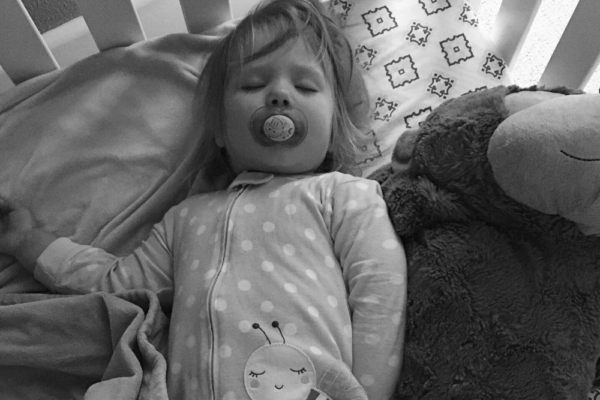Nightmares
We get many questions here at Sproutable about nightmares and young children:
Can toddlers and preschoolers suffer from nightmares?
How can I help my toddler and preschooler with nightmares?
Why does my 2 year old wake up screaming?
How do I stop my child from having nightmares?
You are not alone. It is a normal developmental stage and they often come in waves where young children will have them a few days in a row and then not have any again for a few weeks. Here are some tips to help!
Is it normal for 2, 3 and 4 year olds to have nightmares?
Nightmares are normal and common for our little ones, and can affect everyone’s sleep when they wake up screaming or running into our bed. These scary dreams can start to peak around the preschool years when they are exposed to more ideas and stories (those old school fairy tales are some of the scariest!) while still being fuzzy on the difference between real and pretend.
What to do in the moment
Respond and Soothe
This is intuitive, so keep up the safety net. They truly are afraid. Rub their back. Hold them and murmur, “you are safe, it’s all over” and “you are home, everything is ok now, that felt so scary for you.” Some children want to tell the story and share their feelings, while for others they aren’t able to or are too scared. Let them express their feelings, then tuck them back into bed. Or if they are too freaked out and sharing your bed isn’t an option, let them sleep in a sleeping bag next to your bed. Encourage them to talk about it the next day if they haven’t yet, and finish their narrative with some version of “and you woke up safe in your bed and got comfort.” Dr. Daniel Siegel (The Whole Brain Child), calls this “name it to frame it.”
Teach difference between real & imaginary
“Now you are back home. You are safe now. It’s all over.”
When they won’t wake up
Sometimes (as with night terrors) they are screaming or crying but not yet awake. Singing can be very powerful to get them out of that state. Sing a familiar song while rocking them.
What to do when it becomes a pattern
Change the story
Have them or help them retell the dream and have them change the ending to a happy or silly one.
Meet in your dreams
Visualize meeting in a happy place in your dreams. Have them describe in detail where you will meet.
Change the dream channel
Teach them to flip themselves over or flip the pillow to “change the channel.” This gives them something concrete they can control when they do not like their dream.
Nightmare magic
Put a special imaginary cape or “spray” to keep the nightmares away when you tuck them in with a playful hug and smile to confidently help them to sleep.
Push the button
If they need to use the bathroom, swing by the stove or microwave and have them push a button to “pick” a new dream.
Order from the menu
Use any book and pretend it is a menu. Have them choose a dream from the “menu.”
Light it up
Make sure there are Christmas lights, nightlights, or flashlights within reach so they aren’t scared of the dark or wake up to pitch black.
Practice, Practice, Practice
Practice during the day so the child learns what to do. Role play where you are the child and they are the adult. Kids love this! Teach the things they can try on their own before they come get you. For example: squeeze stuffy, roll over, drink water, turn on flashlight, etc.
After they’ve tried everything else and they still need you
You decide what works for your family. Either they can crawl into bed with you (sometimes they really are that scared!) or maybe you have a sleeping bag on the floor next to your bed that they can crawl into if they need to be close. If neither of these options work for you, no problem! Soothe them and bring them back to their own bed.
For children under 2
It is not as common, but they can wake up to a scary dream too and are unable to verbalize. Respond and soothe just as you would for an older kiddo. This is different from when they wake up and you want them to practice falling back asleep by themselves. Use your intuition to differentiate that cry.





Comments